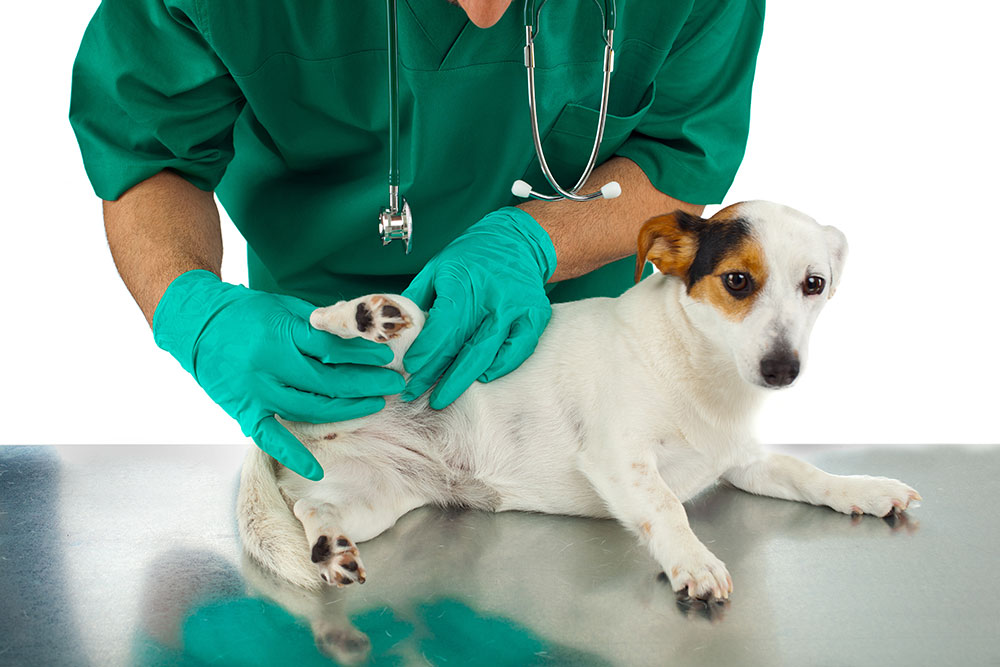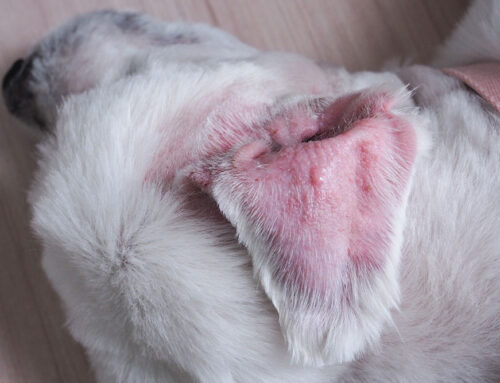Managing Hip Dysplasia in Dogs: From Early Symptoms to Advanced Surgery
Hip dysplasia is one of the most common orthopedic conditions in dogs, affecting both aging companions and young, growing puppies. Some families first notice their older dog slowing down, hesitating on stairs, or avoiding favorite activities. Others bring home a new puppy from a breed known to be at risk, only to learn that joint problems could appear much earlier than expected. In both cases, early recognition and proactive care are key to preserving mobility, easing discomfort, and protecting long-term quality of life.
At Valley Center Veterinary Clinic, we believe your pet deserves the very best at every stage of life. Our approach combines advanced diagnostics, state-of-the-art surgical options, and supportive care like cold laser therapy to give dogs with hip dysplasia the best possible quality of life.
What Is Canine Hip Dysplasia?
Canine hip dysplasia (CHD) occurs when the ball and socket of the hip joint do not fit together properly. Instead of gliding smoothly, the joint becomes loose, leading to abnormal wear and tear. Over time, this instability causes arthritis, pain, and reduced mobility.
While genetics play the biggest role, several other factors influence how quickly hip dysplasia develops and how severely it affects a dog’s quality of life:
- Genetics and breed size: Large breeds like German Shepherds, Labradors, and Golden Retrievers are most often affected.
- Growth rate and diet: Rapid growth and improper nutrition can worsen joint instability.
- Obesity in dogs: Excess weight puts added stress on already unstable joints.
- Lifestyle: High-impact activity or slippery surfaces can aggravate hip issues.
Understanding these influences helps veterinarians and owners work together to slow the progression of the disease and plan for early intervention when needed.
Symptoms Families Should Recognize
Dogs with hip dysplasia may not cry out in pain. Instead, their discomfort often shows in subtle changes:
- Hesitation with stairs or jumping into the car
- “Bunny-hopping” gait or swaying hips when running
- Difficulty rising or stiffness after rest
- Reduced enthusiasm for exercise or playtime
- Limping or uneven wear of hindlimb muscles
Any of these signs should prompt a veterinary visit for further evaluation. Symptoms may start off mild but gradually worsen, especially as arthritis develops.
Getting Ahead of Hip Dysplasia in Puppies
When you adopt a new puppy, it is the perfect time to plan for potential health concerns like hip dysplasia. While no one wants to imagine future orthopedic problems, early steps can make all the difference in protecting your dog’s mobility.
- Set up insurance right away: Pet insurance works best when started from day one, before any problems are documented. Because hip dysplasia is often considered a pre-existing condition once signs appear, having coverage in place early ensures that future diagnostics and treatments are eligible.
- Ask about parental history: Reputable breeders often provide proof of Orthopedic Foundation for Animals certification or PennHIP imaging on the parents, which helps reduce the likelihood of passing on severe joint disease. While genetics are only part of the picture, this information is invaluable in assessing risk.
- Schedule early screening: Once your puppy is old enough, your veterinarian can perform radiographs to evaluate hip development. Detecting joint looseness early allows for proactive management, including nutrition adjustments, controlled exercise, or in select cases, corrective surgery before arthritis takes hold.
By combining insurance planning, informed adoption choices, and veterinary screening, you can give your puppy the strongest possible defense against the long-term effects of hip dysplasia.
How Hip Dysplasia Is Diagnosed
At Valley Center Veterinary Clinic, we take pride in offering the advanced diagnostics needed to properly evaluate orthopedic conditions. Diagnosis often includes:
- A complete orthopedic exam and gait analysis
- Radiographs (X-rays) to assess hip joint structure
These tools allow us to confirm the diagnosis, measure severity, and recommend the most effective treatment options.
Non-Surgical Management Options
Not all dogs require immediate surgery. Many benefit from a multi-pronged medical approach:
- Weight management to reduce stress on the hips
- Low-impact exercise and rehabilitation such as swimming or controlled leash walks
- Pain relief and anti-inflammatory medications prescribed by a veterinarian
- Joint supplements containing glucosamine, chondroitin, or omega-3 fatty acids to support cartilage
- Cold laser therapy to reduce inflammation, ease pain, and improve mobility
These strategies can greatly improve comfort, particularly in mild to moderate cases. Long-term management often requires adjustments as the disease progresses.
Surgical Options for Hip Dysplasia
For many dogs, surgery provides the best long-term outcome. Advances in veterinary orthopedics have made multiple procedures available, each with its own indications:
- Juvenile Pubic Symphysiodesis (JPS): Performed in puppies under five months old to reshape the pelvis before it matures.
- Triple or Double Pelvic Osteotomy (TPO/DPO): Restructures the pelvis in young dogs with minimal arthritis to stabilize the hip.
- Femoral Head Ostectomy (FHO): Removes the damaged ball of the hip joint, creating a “false joint.” Especially useful in smaller dogs.
- Total Hip Replacement (THR): The gold standard in severe cases. Replaces the joint with a prosthetic for near-normal function.
Early surgical intervention offers the best prognosis, particularly before arthritis becomes advanced.
What Happens If Hip Dysplasia Goes Untreated?
Without treatment, hip dysplasia leads to significant and progressive complications:
- Severe arthritis: Joint instability accelerates wear on the cartilage, resulting in chronic pain and stiffness
- Hip luxation: In some cases, the unstable joint may partially or fully dislocate, causing sudden lameness and requiring urgent care
- Muscle loss: Dogs often compensate by shifting weight off their hips, leading to wasting of the thigh muscles
- Reduced mobility: Activities like walking, climbing, or even standing up become increasingly difficult
- Declining quality of life: As pain worsens, many dogs become less interactive, less playful, and more sedentary
Delaying treatment often means more invasive procedures later, longer recovery times, and a reduced chance of returning to full function.
If your dog shows sudden lameness, severe pain, or difficulty walking, it may be a medical emergency. Our team handles emergencies during regular hours, and after-hours referrals ensure pets get the urgent care they need.
Prognosis and Long-Term Care
Hip dysplasia does not have to mean a lifetime of pain. With the right treatment, most dogs return to an active, comfortable lifestyle. Long-term care includes:
- Regular wellness exams to monitor mobility and weight
- Adjustments in exercise and lifestyle as needed
- Continued use of pain management strategies and supplements
- Post-surgical follow-up to ensure proper healing and lasting results
- Rehabilitation therapy to build strength, restore range of motion, and support long-term joint health. Structured programs may include guided exercises, underwater treadmill work, or stretching routines tailored to your dog’s needs.
At Valley Center Veterinary Clinic, our collaborative approach means families are educated, empowered, and supported throughout the process.
A Future of Mobility and Comfort
Hip dysplasia can feel overwhelming, but with the right mix of medical management, surgical expertise, and long-term support, dogs with this condition can thrive. At Valley Center Veterinary Clinic, we are committed to offering “the pinnacle of care” so your pet can live their longest, happiest, healthiest life possible.
If you have noticed signs of hip discomfort in your dog, contact us today at 442-207-4720 or request an appointment online. The sooner hip dysplasia is addressed, the better the outcome for your dog’s future mobility.








Leave A Comment